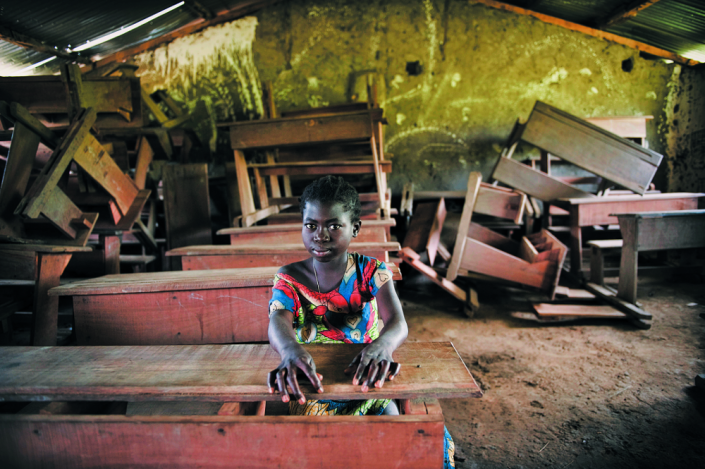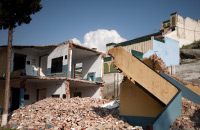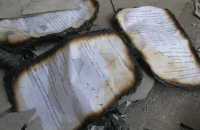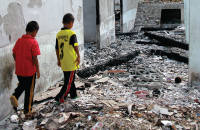Attacks on education are any intentional threat or use of force—carried out for political, military, ideological, sectarian, ethnic, religious, or criminal reasons—against students, educators, and education institutions.
Field Programs and Policies

Field-based practitioners, communities, and ministries responsible for education have developed a range of policies and programs intended to reduce or prevent attacks on teachers, students, and education institutions. These policies and programs aim to protect civilian lives and the right to education for all; limit damage to school buildings; ensure continuity in education when attacks occur; and prevent future attacks.
The aim of this initiative is to establish and advance a knowledge base from which practitioners, policy-makers, and community-based actors can draw, regarding different protective measures and where and how they can be appropriately applied to different contexts. This knowledge base can then be used to advocate with development partners for increased support and implementation of these measures.
Measures employed by affected countries include:
- Physical protection, including unarmed or armed school guards, the reinforcement of school infrastructure, student or teacher housing, alternative transportation or escorts, avoidance of high risk routes to school, arming of teachers, or rapid response plans
- Community involvement in protection, including community-based protection committees, school-based protection committees, school management committees, community involvement in peace building, or involvement of religious leaders
- Alternative delivery of education, including community-based schools, temporary schools, schooling for refugees, mobile training teams, summer sessions, or distance learning
- Negotiations with stakeholders to make schools conflict-free zones
- Restricting military and political use of schools
- Conflict-sensitive reform at the education systems level, including policy to address the causes of conflict such as improving equitable access to education and reforming the curriculum to respond to the learning needs of marginalized groups and promote peace
- Advocacy initiatives, including use of media, human rights/child rights training and awareness, coalition building, direct actions, public hearings, youth mobilization
- Monitoring and reporting attacks on education for early warning, rapid response, advocacy, and accountability
GCPEA has undertaken a multi-year initiative to:
- Build an evidence base that demonstrates the policies and programs that are effective in protecting education from attack
- Identify areas for research and methods of evaluation to contribute to effective practice
- Identify good practices and make recommendations for protecting education at the field level
On October 6, 2016, GCPEA released What Schools Can Do to Protect Education from Attack and Military Use. This report documents how principals, teachers, and community members in conflicts worldwide are working within schools to protect them from violence by armed parties. The report identifies seven types of protection that can be taken at the school level, and calls on governments, the UN, and other agencies to support these efforts to develop and implement appropriate protection plans and measures in schools.
On December 15, 2015, GCPEA released What Ministries Can Do to Protect Education from Attack and Schools from Military Use at a panel discussion at the Permanent Mission of Norway in New York.This briefing paper details concrete steps ministries responsible for education can take to keep schools safe, even in situations of war and insecurity. GCPEA also held a workshop, Promising Practices in Protecting Education from Attack and Schools from Military Use in Istanbul, Turkey on October 5-7, 2015. At the Workshop, over 75 education and protection stakeholders working for Ministries of Education, UN agencies, and local and international NGOs in more than 13 countries affected by attacks, gathered to discuss measures for protecting education and to consider how these approaches could be adapted to different contexts.
The Summary Report of the Istanbul Workshop on Promising Practices for Protecting Education from Attack and Schools from Military Use provides an overview of the Workshop’s sessions as well as updates from participants on steps taken following the Workshop through March 2016 in developing or implementing protective measures or conducting advocacy on endorsement of the Safe Schools Declaration or implementation of the Guidelines for Protecting Schools and Universities from Military Use during Armed Conflict since the Istanbul Workshop.
- Community involvement in protecting education from attack: There is a strong sense that the diverse ways of involving communities themselves in ensuring the safety of their students, teachers, and schools are among the most effective methods of protection. However, relatively little research or evaluation indicates how, why, and when these practices most successfully prevent, mitigate, or respond to attacks on education. This briefing paper assesses a number of good practices for community involvement in the protection of education.
- Protection of teachers from attack: Educators have a vital role to play in protecting classrooms, students and other teachers. Released on Malala Day - July 14, 2014 - this briefing paper reviews and examines good practices in protecting teachers, as well as teachers’ contributions to protecting education.
Resources:
- What Schools Can Do to Protect Education from Attack and Military Use: English | French | Ukrainian, October 2016
- Executive Summary of What Schools Can Do to Protect Education from Attack and Military Use: English | French, October 2016
- Summary Report of the Istanbul Workshop on Promising Practices for Protecting Education from Attack and Schools from Military Use, April 2016
- What Ministries Can Do to Protect Education from Attack and Schools from Military Use: A Menu of Actions: English | French | Somali | Spanish | Ukrainian, December 2015
- Executive Summary of What Ministries Can Do to Protect Education from Attack and Schools from Military Use: English | French | Spanish, December 2015
- Protecting Education Personnel from Targeted Attack in Conflict-Affected Countries, July 2014
- Protéger le personnel de l’éducation contre des attaques ciblées dans les pays touchés par un conflit, juillet 2014
- The Role of Communities in Protecting Education from Attack, Lessons Learned, June 2014
- Le rôle des communautés dans la protection de l’éducation contre les attaques : Leçons apprises, juin 2014
- Education Under Attack 2014: Thematic Essay on the role of communities in protecting education, February 2014
- Study on Field-based Programmatic Measures to Protect Education from Attack, 2011
The Problem
Attacks on education violate the right to education and other internationally protected human rights applicable at all times.
Attacks on students, educators, and education institutions can have a devastating impact on access to education and education systems and on a society’s overall development in the long-term.



